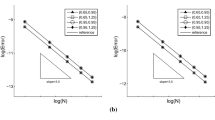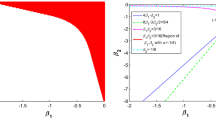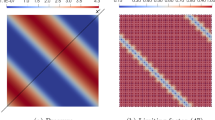Discontinuous Galerkin (DG) method is a spatial discretization procedure, employing useful features from high-resolution finite volume schemes, such as the exact or approximate Riemann solvers serving as numerical fluxes and limiters. In [(2005). Comput. Methods Appl. Mech. Eng. 194, 4528], we developed a Lax–Wendroff time discretization procedure for the DG method (LWDG), an alternative method for time discretization to the popular total variation diminishing (TVD) Runge–Kutta time discretizations. In most of the DG papers in the literature, the Lax–Friedrichs numerical flux is used due to its simplicity, although there are many other numerical fluxes, which could also be used. In this paper, we systematically investigate the performance of the LWDG method based on different numerical fluxes, including the first-order monotone fluxes such as the Godunov flux, the Engquist–Osher flux, etc., the second-order TVD fluxes and generalized Riemann solver, with the objective of obtaining better performance by choosing suitable numerical fluxes. The detailed numerical study is mainly performed for the one-dimensional system case, addressing the issues of CPU cost, accuracy, non-oscillatory property, and resolution of discontinuities. Numerical tests are also performed for two-dimensional systems.
Similar content being viewed by others
References
Ben-Artzi M., Falcovitz J. (1984). A second-order Godunov-type scheme for compressible fluid dynamics. J. Comput. Phys. 55, 1–32
Cockburn B., Hou S., Shu C.-W. (1990). The Runge–Kutta local projection discontinuous Galerkin finite element method for conservation laws IV: the multidimensional case. Math. Comput. 54, 545–581
Cockburn B., Lin S.-Y., Shu C.-W. (1989). TVB Runge–Kutta local projection discontinuous Galerkin finite element method for conservation laws III: one-dimensional systems. J. Comput. Phys. 84, 90–113
Cockburn B., Shu C.-W. (1989). TVB Runge–Kutta local projection discontinuous Galerkin finite element method for conservation laws II: general framework. Math. Comput. 52, 411–435
Cockburn B., Shu C.-W. (1991). The Runge–Kutta local projection P1-discontinuous Galerkin finite element method for scalar conservation laws. Math. Model. Numer. Anal. (M 2 AN), 25, 337–361
Cockburn B., Shu C.-W. (1998). The Runge–Kutta discontinuous Galerkin method for conservation laws V: multidimensional systems. J. Comput. Phys. 141, 199–224
Dumbser M., Munz C.D. (2005). Arbitrary high-order discontinuous Galerkin schemes. In: Cordier S., Goudon T., Sonnendrcker E. (eds), Numerical Methods for Hyperbolic and Kinetic Problems EMS Publishing House. Zurich, Switzerland, pp. 295–333
Engquist B., Osher S. (1981). One sided difference approximation for nonlinear conservation laws. Math. Comp. 36, 321–351
Godunov S.K. (1959). Finite difference methods for the computation of discontinuous solutions of the equations of fluid dynamics. Math. Sbornik, 47, 271–306
Harten A., Engquist B., Osher S., Chakravathy S. (1987). Uniformly high-order accurate essentially non-oscillatory schemes, III. J. Comput. Phys. 71, 231–303
Harten A., Lax P.D., van Leer B. (1983). On upstream differencing and Godunov-type schemes for hyperbolic conservation laws. SIAM Rev. 25, 35–61
Jiang G., Shu C.W. (1996). Efficient implementation of weighted ENO schemes. J. Comput. Phys. 126, 202–228
Krivodonova L., Xin J., Remacle J.-F., Chevaugeon N., Flaherty J.E. (2004). Shock detection and limiting with discontinuous Galerkin methods for hyperbolic conservation laws. Appl. Numer. Math. 48, 323–338
Lax P.D., Wendroff B. (1960). Systems of conservation laws. Commun. Pure Appl. Math. 13, 217–237
Osher S., Solomon F. (1982). Upwind difference schemes for hyperbolic conservation laws. Math. Comput. 38 (1982), 339–374.
Qiu J., Dumbser M., Shu C.-W. (2005). The discontinuous Galerkin method with Lax–Wendroff type time discretizations. Comput. Methods Appl. Mech. Eng. 194, 4528–4543
Qiu J., Khoo B.C., Shu C.-W. (2006). A Numerical study for the performance of the Runge–Kutta discontinuous Galerkin method based on different numerical fluxes. J. Comput. Phys. 212, 540–565
Qiu J., Shu C.-W. (2003). Finite difference WENO schemes with Lax–Wendroff-type time discretizations. SIAM J. Sci. Comput. 24, 2185–2198
Qiu J., Shu C.-W., (2005). Runge–Kutta discontinuous Galerkin method using WENO limiters. SIAM J. Sci. Comput. 26, 907–929
Qiu J., Shu C.-W. (2005). A comparison of troubled-cell indicators for Runge– discontinuous Galerkin methods using WENO limiters. SIAM J. Sci. Comput. 27, 995–1013
Shu C.-W. (1988). Total-variation-diminishing time discretizations. SIAM J. Sci. Stat. Comput. 9: 1073–1084
Shu C.-W. (1987). TVB uniformly high-order schemes for conservation laws. Math. Comput. 49, 105–121
Shu C.-W., Osher S., (1989). Efficient implementation of essentially non-oscillatory shock capturing schemes II. J. Comput. Phys. 83, 32–78
Taylor M.E. (1996). Partial Differential Equation I: Basic Theory, Applied Mathematical Sciences, Vol 115. Springer, Berlin
Titarev V.A., Toro E.F. (2002). ADER: arbitrary high-order Godunov approach. J. Sci. Comput. 17, 609–618
Toro E.F. (1997). Riemann Solvers and Numerical Methods for Fluid Dynamics, A Practical Introduction. Springer, Berlin
Toro E.F., Spruce M., Speares W. (1994). Restoration of the contact surface in the Harten-Lax-van Leer Riemann solver. J. Shock Waves 4, 25–34
Woodward P., Colella P. (1984). The numerical simulation of two-dimensional fluid flow with strong shocks. J. Comput. Phys. 54, 115–173
Author information
Authors and Affiliations
Corresponding author
Rights and permissions
About this article
Cite this article
Qiu, J. A Numerical Comparison of the Lax–Wendroff Discontinuous Galerkin Method Based on Different Numerical Fluxes. J Sci Comput 30, 345–367 (2007). https://doi.org/10.1007/s10915-006-9109-5
Received:
Accepted:
Published:
Issue Date:
DOI: https://doi.org/10.1007/s10915-006-9109-5
Keywords
- Discontinuous Galerkin method
- Lax–Wendroff type time discretization
- numerical flux
- approximate Riemann solver
- limiter
- WENO scheme
- high-order accuracy




